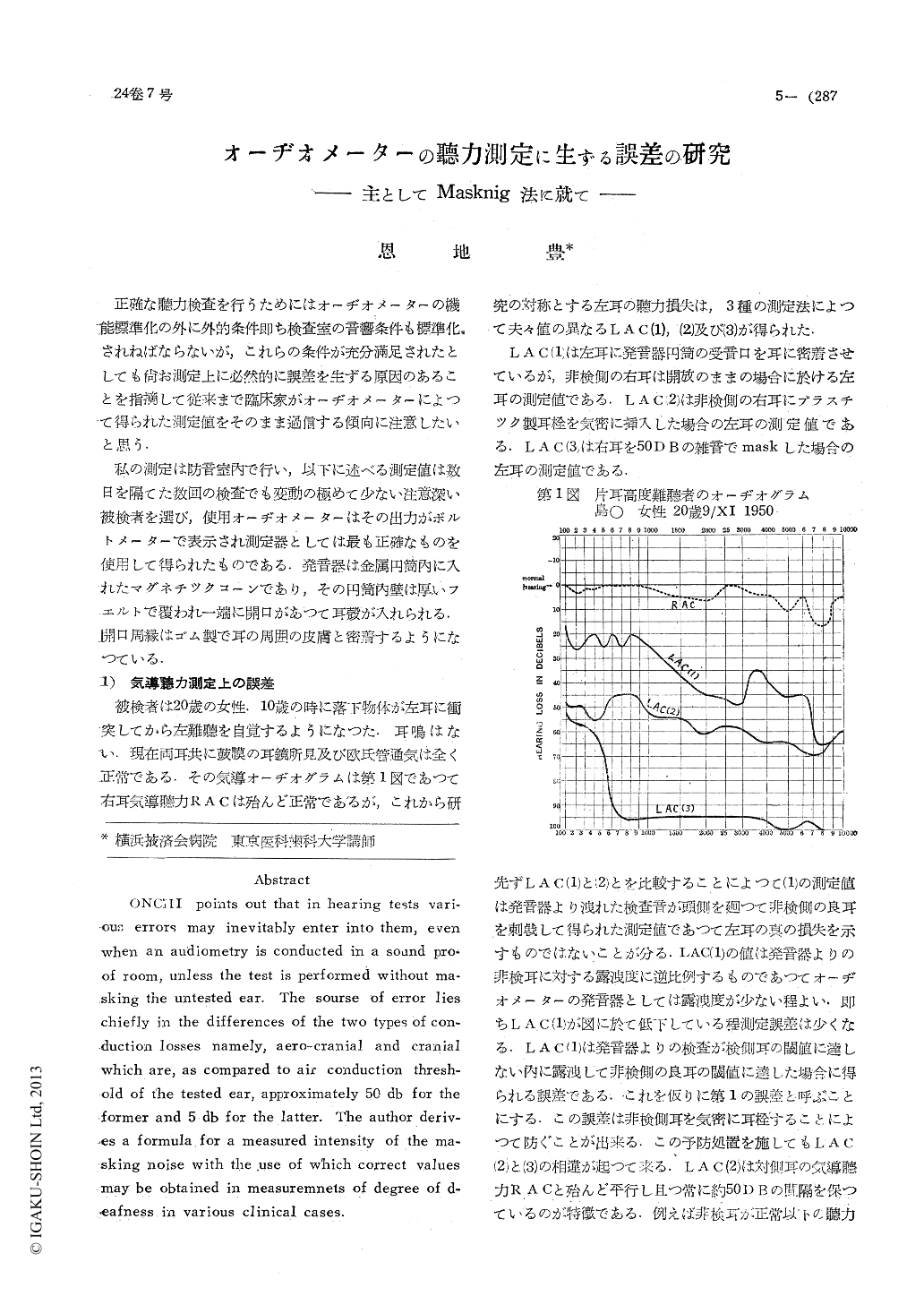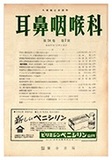- 有料閲覧
- 文献概要
- 1ページ目
要約
1)検査音の彊さが検側耳の閾値に達しない内に反対側の閾値を刺戟して生する誤差は被検者が非倹側耳に向う検査音の偏位を自覚することによつて防止されるが,閾値に近い即ち被検者にとづて弱い検査音はこの偏位が明瞭に自覚されないことが屡女あつて誤差を生する.被検者が偏位を自覚し得たとしても検側の真の測定値は求められない.
2)気導検査音が耳に当てたレシーバーより洩れて頭側を廻つて非検耳を刺戟することによつて生す局誤差は同耳にmasking用レシーバーを寧着せしめることによつて防ぐことが出来る.
3)気導検査に於て両耳の見掛の聴力差が50DBである場合には良耳を雑音にてmaskし悪耳の測定値に変化が起るかどうかを見なければならない.
4)気導頭部伝導損失は50DBである.故にmasking用雑音の強さは50DBを一つの標準にしなければならない.
5)骨導頭部伝導損失は僅に5DBに過ぎないため検側聴力が対側の骨導聴力によつて影響され易い.
6)気導及び骨導頭部伝導損失の値より非倹耳のmaskingの強さは決定されねばならない.
7)一耳が神経性難聴で他耳が中耳性難聴である場合には前者のオーヂオグラムは後者に影響されて中耳性の形を呈するから注意を要する.この際神経性難聴が50DB以上の損失である際には測定が不能なことが多い.
8)maskingを正しく行うには以上の理論の外にrnasking用雑音の音響特性を知つて置かねばならなV・が,これを知る方法は次の機会に述べることにする.
ONCHI points out that in hearing tests various errors may inevitably enter into them, even when an audiometry is conducted in a sound proof room, unless the test is performed without masking the untested ear. The sourse of error lies chiefly in the differences of the two types of conduction losses namely, aero-cranial and cranial which are, as compared to air conduction threshold of the tested ear, approximately 50 db for the former and 5 db for the latter. The author derives a formula for a measured intensity of the masking noise with the use of which correct values may be obtained in measuremnets of degree of deafness in various clinical cases.

Copyright © 1952, Igaku-Shoin Ltd. All rights reserved.


